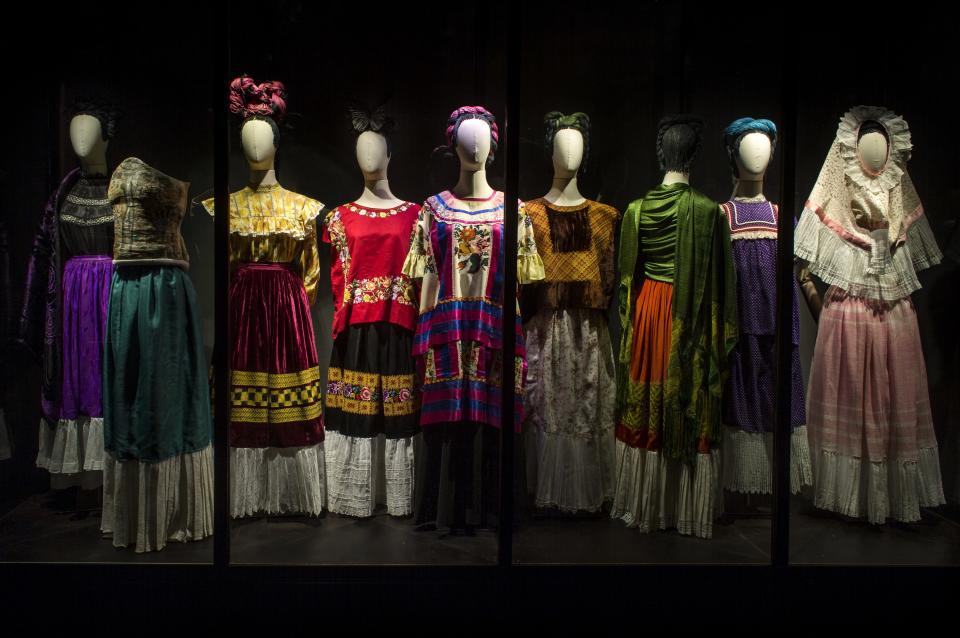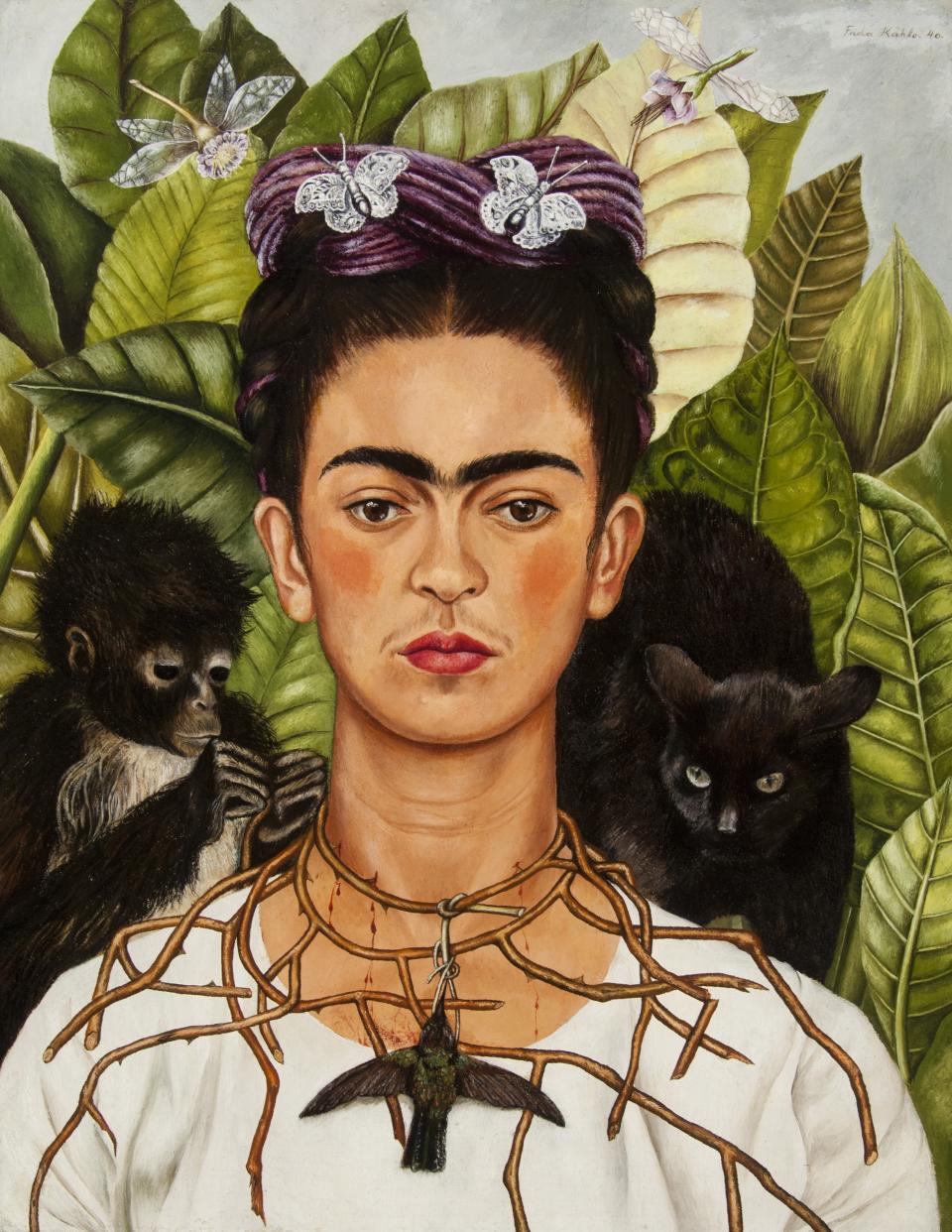Why Artist Frida Kahlo's Work Is More Relevant Now Than Ever
Today's favorite buzzword is "brand." It's the path to internet fame. It's the style of a designer or writer's work. It's how and why you present yourself to your public, whether that's an audience of friends, colleagues, or hundreds of thousands of YouTube subscribers. In that sense, the late Mexican modernist artist Frida Kahlo had today's best marketing tool down pat. Kahlo was a self-declared Communist who lived through the Mexican Revolution (1910 to 1920), and her likeness is now recognized around the world. But as shown in two major exhibitions opening this month, her distinctive Tehuana clothing (native to Oaxaca), unibrow, and bright red lipstick were more than just a fashion statement; they were a political statement that is reflected in her paintings, and one that still challenges us today.

"Frida Kahlo: Appearances Can Be Deceiving" at the Brooklyn Museum (February 8 to May 12) and "Frida Kahlo and Arte Popular" at the Museum of Fine Arts, Boston (February 27 to June 16) explore the multifaceted artist beyond her biography and her much-publicized relationship with muralist Diego Rivera. Curators Catherine Morris and Lisa Small of the Brooklyn Museum have focused their show on Kahlo's clothing and personal items, including loans from her Blue House in Mexico City that have never been displayed in the United States. In Boston, curator Layla Bermeo emphasizes the inspiration Kahlo found in folk art and her Mexican identity.

Frida Kahlo in Rivera Living Room with Figure of Judas, c.1940 (gelatin silver print)
"The prevailing narrative that women are too often defined by their clothes, their appearance, and their beauty was powerfully co-opted by Kahlo through the empowering and intentional choices she made to craft her own identity," says Morris. In the "Appearances" exhibit, the artist's life is mapped thematically, using family portraits, paintings by Kahlo and peers, and West Mexican ceramics to give background to her self-styled identity, explored in the last two galleries through her clothing, painted back braces, and makeup. Throughout her life, Kahlo subverted traditional gender roles, dressing in men's clothing in family photos and in her self-portraits. Her best-known sartorial looks were native clothing, which she used to proclaim her mexicanidad, or Mexican nationalism. "The show expands our understanding of Kahlo by revealing the unique power behind the ways she presented herself in the world and depicted herself in her art," she continues.

That self-presentation, argues Bermeo's show, needs to be questioned. In "Arte Popular," Kahlo's (and a few peers') paintings will be presented in conversation with Mexican folk art objects, ceramics, embroidered textiles, toys, and devotional ex-votos similar to those the painter displayed in her Mexico City home. "Collecting folk art was a political act," says Bermeo, who also notes that it influenced her subject matter and her use of materials. "It was a mark of patriotism to have these objects in your home." Dressing in traditional Tehuana clothing was also a political act, but the show takes a "critical look" at its appropriation of native people. "Her life was quite different from those of the women who would have traditionally worn those garments," she comments of the German-Mexican artist, who grew up in a society family.
Similar conversations about cultural appropriation, gender, and nationalism contained in and spurred by Kahlo's work are top of today's news stream. "During her lifetime, Kahlo was very open about having multiple identities," said Bermeo, referencing the artist's mixed heritage, gender-fluid clothing, and relationships with both men and women. "That resonates a lot with today's identity politics." Despite their historical subject matter, the two shows feel current and fresh.

